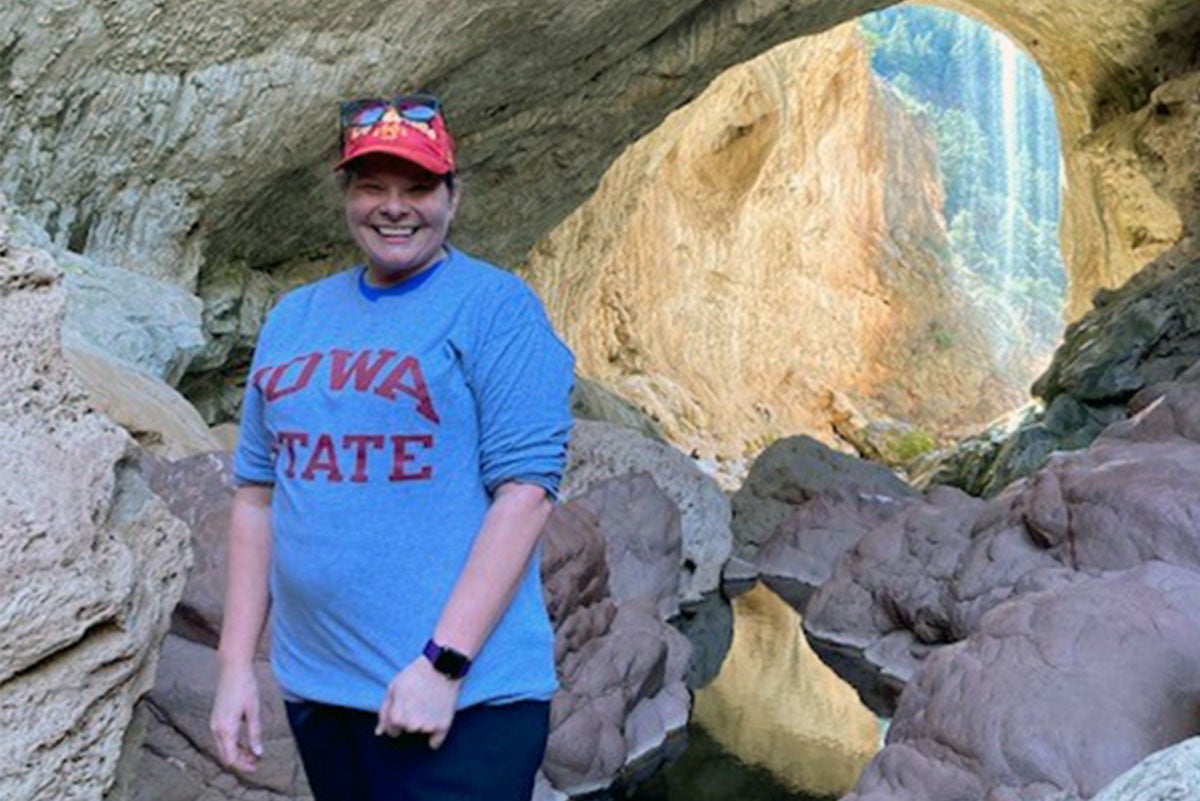Fast Action Saved Deborah From a Serious Stroke
August 21, 2023Deborah’s colleague knew what these signs meant: at just 36 years old, she was having a stroke.
According to the CDC, stroke is the leading cause of disability for adult Americans. Knowing the signs can help save a life or prevent serious disability. Just ask Deborah Martinez.
Deborah’s Story
On a Tuesday morning in March 2018, Deborah, a graduate recruiter in the University of Georgia’s Graduate School, went about her usual routine. She attended a staff meeting and discussed goals set during the meeting afterwards with a colleague. Nothing seemed out of the ordinary until Deborah suddenly had what she now knows as “classic stroke signs.” She had slurred speech, weakness in the arm, and facial drooping. Luckily, Deborah’s colleague knew what these signs meant: at just 36 years old, she was having a stroke. Without hesitation, the colleague called 911.
Deborah’s stroke was caused by a blood clot that suddenly blocked a blood vessel in her brain. Without blood flow, millions of brain cells became stressed, and some started to die. Her symptoms got worse quickly. At one point, she even passed out. Paramedics arrived within 15 minutes and asked where she wanted to go for treatment. She decided St. Mary’s Hospital and was glad she did.
“Then the next miracle happened, Dr. Woodall worked there. I credit him and my colleague for truly saving my life,” says Deborah. Dr. Neil Woodall, a neurosurgeon at Georgia Neurological Surgery & Comprehensive Spine and St. Mary’s medical director of neurosciences, is experienced in surgical treatment of complex neurosurgical problems, including mechanical thrombectomy. This high-tech emergency procedure was used to save Deborah’s life.
Deborah was the very first patient at St. Mary’s to undergo a mechanical thrombectomy, which is a minimally invasive technique for removing blood clots. Now, she is living with minimal deficits from a stroke that otherwise would have left her partially paralyzed – at best.
After her procedure, Deborah recovered in St. Mary’s Intensive Care Unit, then was admitted to St. Mary’s Center for Rehabilitative Medicine to work towards the fullest possible recovery. Physical and occupational therapy became part her morning routine to ensure she regained all the strength and function she could. Now, she always makes sure to get in her 45-minute walk every day, rain or shine. While she still has some weakness at times in her left arm, she feels very lucky to have made the recovery she did.
Today, Deborah is a graduate officer at UGA’s College of Pharmacy. She feels great and is loving life. She is almost hesitant to mention the one deficit she notices from her stroke: the weakness in her left arm.
“I see other stroke survivors who have a lot more challenges than I have,” she says. “I am so grateful to Dr. Woodall, the staff of St. Mary’s, and my physical and occupational therapists for everything they have done for me. They made my recovery possible. I want more people to get the great care I received. The first step is to recognize the symptoms and call for help.”
Deborah’s Advice
As a proponent of stroke awareness, Deborah encourages everyone to immediately call 911 if they think they or someone they are with is having a stroke. That’s because in a stroke, time is brain. Up to 2 million brain cells die every minute unless blood flow can be restored. Getting help fast is essential to reducing the risk of death and disability.
“If you can get to a hospital, like St. Mary’s, that has technology for a mechanical thrombectomy, tell the paramedics,” she recommends.
Signs of a Stroke
It is important to know the signs of a stroke. If you think someone is having a stroke, BE FAST:
- B: Balance – ask the person to stand or walk. Are they able to keep their balance?
- E: Eyes – ask if they have any vision changes (blurry vision, double vision or loss of vision). Do their eyes appear stuck in an odd position?
- F: Face - ask the person to smile. Does one side of their face droop?
- A: Arms - ask the person to raise both arms. Does either arm drift downwards?
- S: Speech - ask the person their name, address, or other common information. Is their speech slurred or do they appear confused?
- T: Time - if you notice any of these signs, call 911 immediately.

Thanks to the immediate care she received, Deborah today has almost no deficits from her stroke, which allows her to fully enjoy life, such as this trip in December 2022 to Tonto Natural Bridge State Park in Arizona.

Members of St. Mary's physical therapy team take Deborah for her first walk following her stroke and mechanical thrombectomy.

